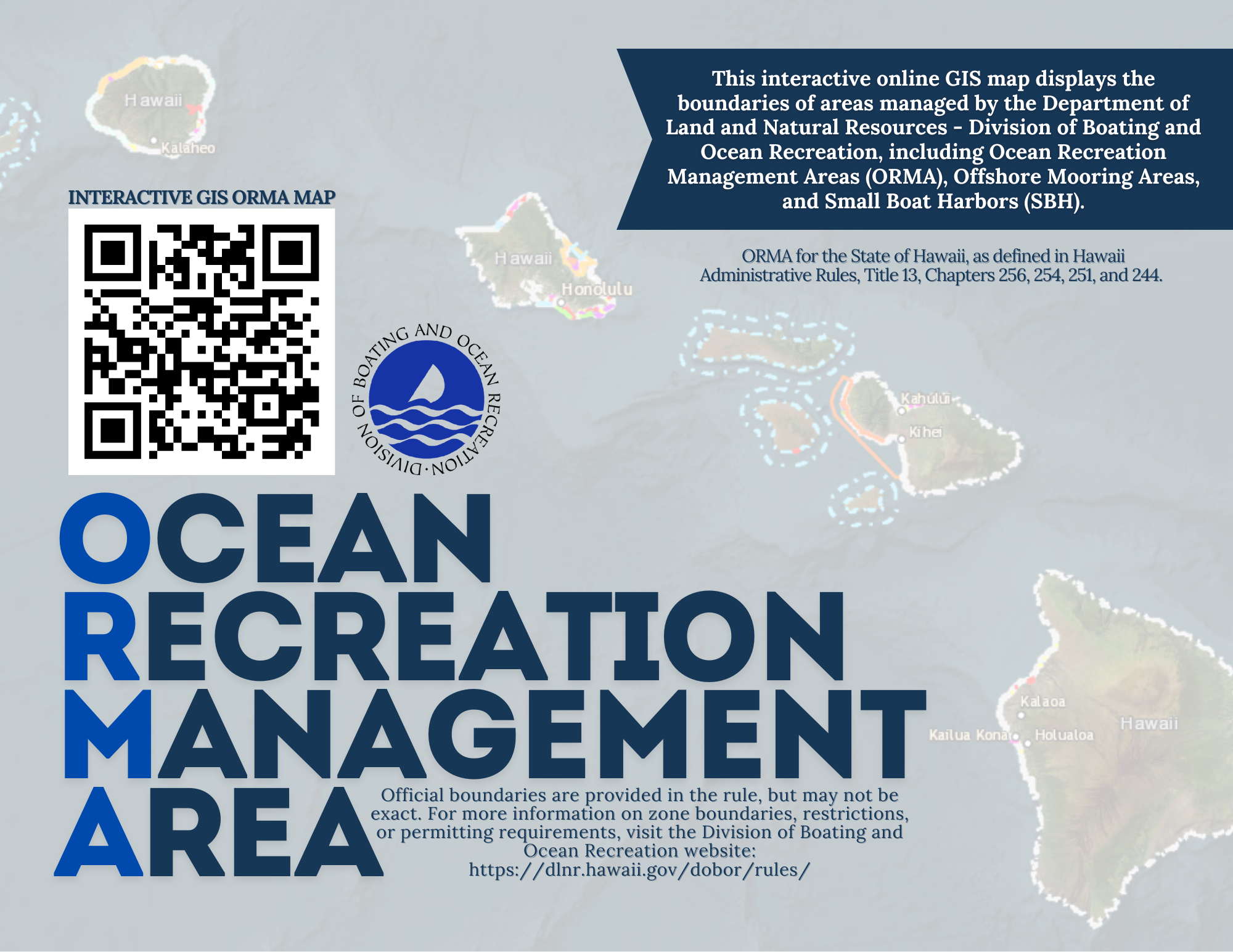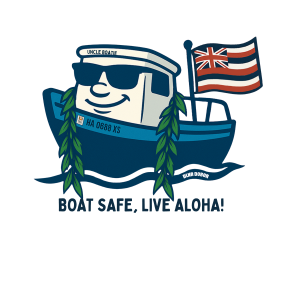WHAT TO KNOW BEFORE YOU GO
GIS INTERACTIVE ORMA MAP
An ORMA is a designated nearshore area that extends 3,000 feet seaward from the coastline and may contain zones for specific ocean uses, including:
- Swimming
- Thrill Craft operation
- Water skiing or sledding
- Canoe/kayak ingress and egress
- Snorkeling, scuba, and sightseeing tours
- Parasailing
- High-speed boating
ORMAs help reduce user conflicts, increase safety, and manage access. It is important for vessel operators to understand permitted and restricted activities within ORMAs.
| LINK TO ORMA MAP |

A little bit of knowledge can go a long way. Here are some ways to educate yourself before you go out on the water.
- Subscribe to the U.S. Coast Guard Local Notices to Mariners, and update nautical charts and related information weekly. Safe navigation is not an accident.
- Monitor weather conditions. Use a NOAA weather radio, an inexpensive receiver that can provide instant access to weather forecasts and emergency weather information.
- Recreational boaters should take courses in chart use, seamanship and navigation. Contact the United State Power Squadrons and the United States Coast guard Auxiliary to enroll.
- Participate in the volunteer cooperative Charting program through the U.S. Power Squadrons.
- Smaller boats should avoid using deep-draft channels which are the only places large ships can travel. Small recreational boats in front of a ship’s bow are often not visible from the ship’s bridge. Be aware and considerate of large commercial vessels.
Visit the District 14 Notices to Mariners web page (includes Main Hawaiian Islands)
|
NOAA |
URL ON THE WEB |
| Charts | https://nauticalcharts.noaa.gov |
|
Educational information about tides, tide predictions, water levels and currents: |
|
|
Weather Radio |
|
|
National Data Buoy Center |
|
|
Ocean Prediction Center |
|
|
U.S. COAST GUARD |
URL ON THE WEB |
|
USCG 14th District (including Hawaii) |
|
|
Office of Boating Safety |
|
|
U.S. Coast Guard Auxiliary |
|
|
United States Power Squadrons |
This page was last updated on 09.12.25.
